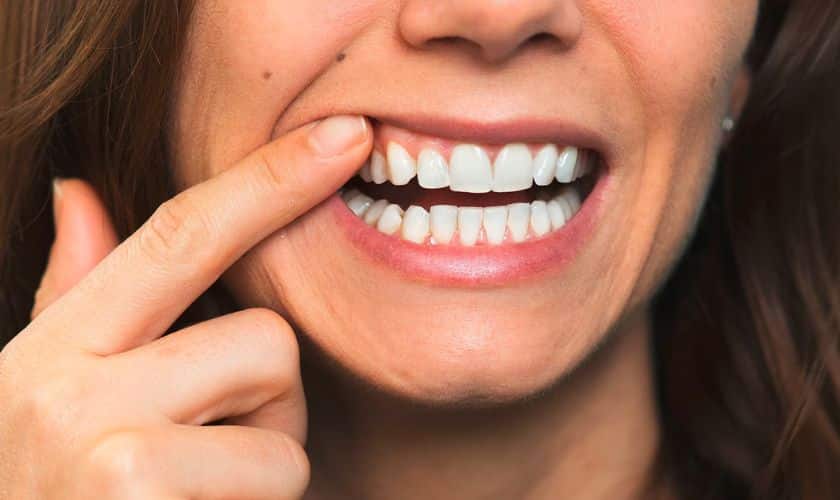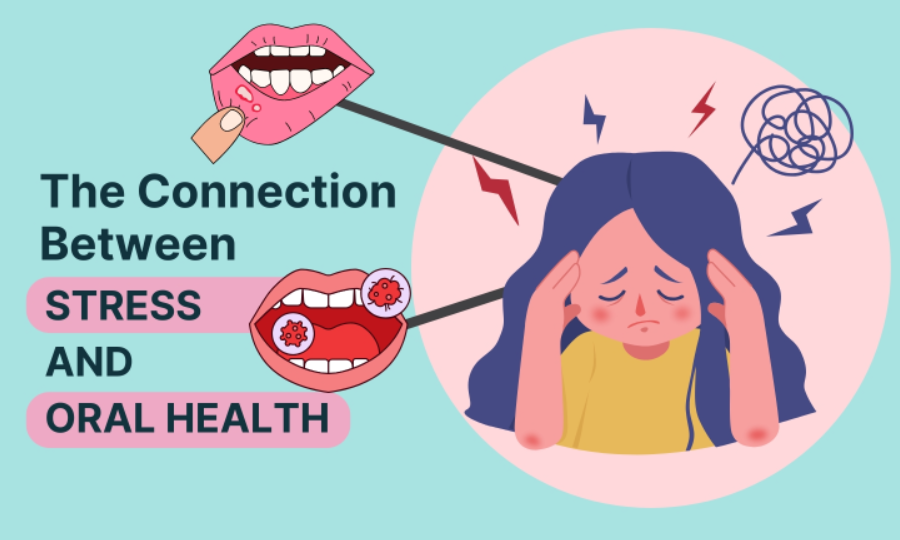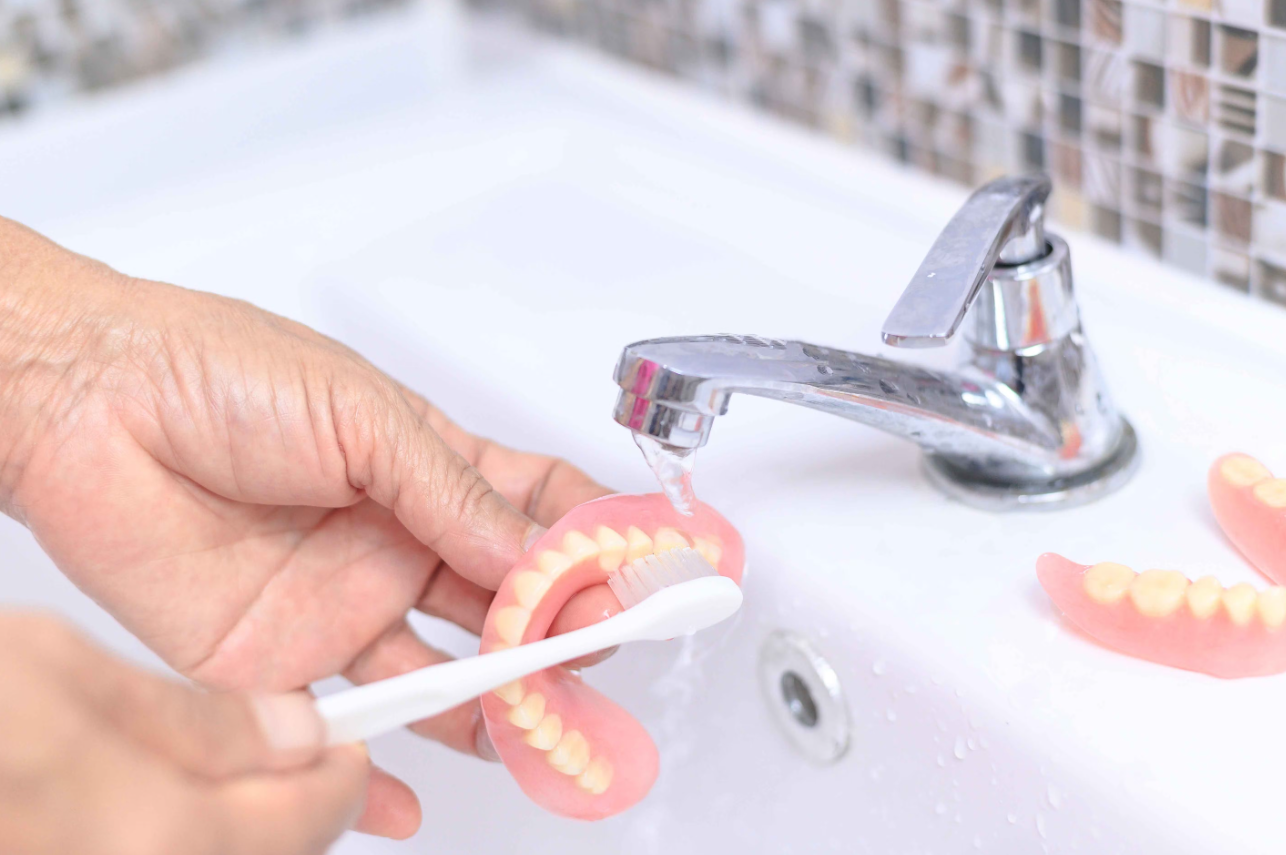Have you ever had this experience: you are chewing and suddenly realize that there is a small nibble or a squeeze in your gum, and then you wonder what it is? Locating something in your gum that seems like a hole can be one of those unusual, uncomfortable, situations that will cause you to immediately cease whatever action you are taking. Perhaps you felt it when you brushed or tasted it with the tongue and now your mind is racing, and you think maybe something is very wrong in your mouth.
You can not afford to neglect a hole in your gum. It may be some minor injury or an initial infection or periodontal disease. In some cases, it is merely your gum responding to some irritation or pressure but sometimes, it is an indication that there is something going on beneath the surface.
The bright side? It’s almost always fixable. With the right care and quick action, most cases heal beautifully, no panic needed. So, let’s find answers to why do I have a hole in my gum, where these gum holes usually show up, how to spot the early signs, and the smartest and most natural ways to treat and prevent them before they turn into a bigger issue.
What Does “A Hole In My Gum” Really Mean?
When you’re inquiring: why do I have a hole in my gum, you’re describing a condition where the gum tissue looks cratered, pocketed, indented, or like there’s actually a gap between the gum and tooth.
In short: the smooth line of gum tissue around your tooth has been breached.
According to reliable sources, that “gum hole” is not always a literal tunnel, but rather an area where the gum tissue has pulled away, receded, or been damaged, forming a visible or tactile pocket.
Here’s what’s important: this gap is often a warning sign of an underlying issue, not just an aesthetic glitch. If you see it or feel it, you should care. So “why do I have a hole in my gum?” is your body’s way of saying: “please check me”.
Where Can Holes In Your Gums Appear?

You might be wondering, where can holes in your gums actually show up? It’s a fair question, because the location usually tells a story about what’s causing it.
Let’s break it down.
You might notice one along the gumline, right where your tooth meets the gum. That’s a common spot, especially if gum disease or early recession is starting to creep in.
Sometimes it happens between two teeth, that little dip where food loves to get stuck. If the gum there starts to recede or weaken, a small pocket can form and feel like a hole.
Another place? Around a tooth extraction site. After a tooth’s been pulled, you’ll have an open socket for a while. It’s part of the healing process, but yeah, it definitely looks like a hole for a bit.
And then there are cases where the gum tissue itself is irritated or infected, like with ulcers or viral infections (for example, Herpetic Gingivostomatitis). Those can cause small, painful spots that feel like craters in the gum.
So really, these holes can appear almost anywhere, near your front teeth, in the back by your molars, or around the jawline. Pinpointing the exact spot can help you (and your dentist) figure out what’s behind it and how to treat it faster.
What Does A Hole In Your Gums Look Like?
If we physically paint the picture on what does a hole in your gums look like, here’s a glimpse:
The “gum hole” may appear as:
-
An indentation or crater in the gum tissue.
-
A pocket between the tooth and gum, where your finger or floss might catch.
-
Redness, swelling, or an ulcer around that spot.
-
Sometimes the gum looks as if it has a divot, or you can see a darker cavity-like spot in the soft tissue.
If you have a hole in the gum, it doesn’t always mean a literal round hole like a cave, but that your gum contour is damaged or receded enough to feel like one.
Do Gum Holes Go Away?
You’re probably asking: do gum holes go away?, that’s the big “will I be okay?” question. The answer: sometimes yes, sometimes no, it depends on the cause and how early you act.
-
If the cause is a minor trauma or post-extraction socket that’s healing normally, yes, the hole may close up.
-
In case the cause is a more severe gum disease (as Periodontitis) or a chronic infection, then the gum hole would not close or improve without adequate treatment.
- With good oral health, professional therapy, and encouraging your gum tissue health, your odds of reversal are increased.
And yes, there is some hope in healing, provided you do it early enough and act quickly. That brings us to…
Shedding Light On The Causes: Why Do I Have A Hole In My Gum?

You know that moment when you run your tongue over your gum and feel a little dip or hole, and suddenly your brain’s like, uh oh, what’s going on? Yeah, it’s unsettling. But before you start spiraling, take a breath. There are actually several reasons this can happen, and most of them can be fixed or managed pretty easily once you figure out what’s causing it.
Knowing why I have a hole in my gum is the first step to stopping it from getting worse, and to help your gums heal properly. Let’s go through what could really be happening under the surface.
1. Gum Disease and Receding Gums
Plain old gum disease - periodontitis is an advanced form of infection that can cause severe damage in the mouth and force an individual to wonder: Why do I have a hole in my gum? This occurs when bacteria and plaque begin assaulting tissues and bone that hold your teeth in position. In the long run, the gums will recede and the teeth will be left with small pockets or holes between them and the gums line.
Such pockets create little food and bacteria traps and once they are in business, it can get down hill quickly - unless you take care of them. You may feel that your teeth are a bit loose, bleeding or swollen. The good news? It is possible to reverse it. Frequent cleaning, improved brushing and flossing performance and anti-inflammatory rinses (such as The Goodbye Company Gum Disease Oral Solution) can reduce the situation down to size and allow your gums to regenerate on their own.
2. Infections and Abscesses
The other cause of such small holes could be due to gum abscesses, which are basically the formation of an infection below the gum. These will cause pus to drain and only leave a hollow hole that will be like a hole.
Typically it begins with bacteria taking advantage of an area beneath the gum (perhaps an area of food that has become trapped or an untreated cavity). Your body has retaliated, spawned pus and when the latter goes away it leaves a small crater. Should the infection continue its progress, it may dig deeper into the tissue and widen the hole. The fix? Waiting is unwise, your dentist will be able to clean it out and put you on antibiotics to prevent its recurrence.
3. Tooth Extractions or Trauma
It is sometimes your body healing that hole. With a tooth removal, there is always a natural nostalgia, the socket, and it will appear as a hole until your bone and gum heal themselves.
However, when the so-called hole does not heal, or, on the contrary, begins to hurt, you may have a dry socket or infection. And that should be addressed promptly.
Then there is the daily trauma, brushing overly, flossing rough, or biting something sharp. Those may produce small holes in the gum that resemble holes. Fortunately, they normally fix themselves provided that things are clean and not further irritated.
4. Improper Oral Hygiene and Plaque Buildup
Let’s be real, skipping flossing or rushing through brushing might not seem like a big deal at first, but it adds up. Plaque and tartar start to form, and that buildup irritates your gums. The result? Inflammation, bleeding, and eventually, tiny holes or gaps near your teeth.
The tricky part is that this happens slowly. By the time you feel the hole, bacteria have already had a party in there. The fix is simple, though: daily brushing, flossing, and a good mouth rinse to keep inflammation down. Catch it early, and you can reverse a lot of the damage before it turns into full-blown gum disease.
5. Herpetic Gingivostomatitis
This one’s a bit different. Herpetic gingivostomatitis, usually caused by the herpes simplex virus, can lead to small ulcers and lesions that look and feel like holes in your gums. It’s more common in kids or people with weaker immune systems, but adults can get it too.
You might notice redness, swelling, or tiny crater-like sores on your gums, lips, or inside your mouth. They can merge together or deepen, which makes them feel more like holes than surface sores. The silver lining? They usually heal within a week or two with rest, hydration, and antiviral meds if needed.
6. Underlying Health Conditions
Sometimes, the question: “why do I have a hole in my gum” isn’t just about your mouth, it’s about what’s going on with your whole body. Conditions like diabetes, autoimmune issues, or even vitamin deficiencies (especially Vitamin C and D) can mess with how your gums heal and fight off bacteria.
When your immune system is struggling, your gums become the first to show it. They may break down faster, heal slower, or get inflamed easily. If gum holes keep showing up or take forever to close, it’s a good idea to get a full health checkup alongside your dental visit. Healthy gums often mean a healthy body.
7. Poorly Fitting Dental Work
If you wear crowns, bridges, or dentures that don’t fit perfectly, they can rub against your gums day after day. That constant friction irritates the tissue and can cause small pits or holes to form over time.
It’s a slow process, but one that’s easy to fix, a quick adjustment from your dentist can make all the difference. Well-fitting dental work should feel natural, not like something’s constantly poking your gums.
8. Smoking and Chemical Irritation
Smoking, vaping, or using harsh alcohol-based mouthwashes can seriously mess with your gums. These things reduce blood flow and oxygen supply, which means your gums can’t heal properly.
As a result, even small sores or depressions take forever to go away, and sometimes they don’t heal at all. Quitting (or even cutting back) and switching to gentler oral care products can help your gums bounce back faster.
9. Cysts or Oral Lesions
Now, in rare cases, a hole-like area could actually be a cyst or benign lesion near the gum root. These are fluid-filled sacs that form when tissue reacts to infection or trauma. They’re not super common, but they do happen.
Dentists usually catch them on an X-ray, and if necessary, remove them to prevent further irritation. If you’ve got a persistent or growing hole, especially one that’s sore or bleeding, don’t brush it off. It’s worth checking out.
In short, there isn’t just one clear answer to “why do I have a hole in my gum”. It could be gum disease, infection, trauma, or even something deeper linked to your overall health. But figuring out the cause is half the battle.
Once you do, you can treat it properly, whether that means seeing your dentist, improving your oral routine, or adding natural gum-healing products like The Goodbye Company Gum Disease Oral Solution to your care plan. Your gums can heal, they just need a little help and attention to do it right.
Are Gum Holes A Result Of Cavities (Tooth Decay)?

Good question: are gum holes a result of cavities – tooth decay? The simple answer: sometimes indirectly, but not always directly.
-
A classic cavity (decay of tooth enamel) doesn’t by itself cause a “hole in the gum” , it causes a hole in the tooth. However, if that decay extends below the gumline or infects the root, it can influence the gum tissue and lead to pockets or holes near the gum.
-
Also, when decay weakens the tooth root or causes infection, the surrounding gums can suffer and recede, making a hole appear. So yes, decay can lead to conditions where the answer to why do I have a hole in my gum includes decay.
-
But more often holes in gum are due to gum disease, infection, or trauma rather than straightforward enamel cavity. Sources list gum disease as primary.
Cavities may be one piece of the puzzle, but for gum holes you have to look broadly at gum tissue health, not just tooth decay.
How Do You Treat A Hole In Your Gum?
If your question is how do you treat a hole in your gum?, you’re thinking right. Treatment depends on cause, but there are actionable steps you can take.
Professional treatments
These may include:
-
Scaling and root-planing: Deep cleaning to remove plaque/tartar from below the gumline, helping gums re-attach.
-
Pocket elimination surgery / flap surgery: For deeper holes/pockets, the gum tissue may need to be lifted, cleaned, and reattached to remove the pocket.
-
Gum grafting: If gum tissue has receded significantly, grafts can replace lost tissue.
-
If infection is involved (viral or bacterial), your dentist may prescribe antibiotics or antiviral therapy as appropriate.
At-Home And Natural Support
While you do the professional route, you can also boost your gum health. This is where The Goodbye Company Gum Disease Oral Solution enters. If you currently suffer from poor oral health, bleeding gums, tooth pain, sensitivity to hot or cold , introducing this into your daily routine makes sense.
Why it’s helpful:
-
It’s an all-natural preventative oral care solution.
-
It helps prevent and treat gingivitis, which is often the precursor to the deeper gum disease that causes holes.
-
It’s infused with Omega 3 and 9 oils, known for anti-inflammatory benefits.
-
It also includes neem and clove essential oils, both traditional in oral health care for their antibacterial and soothing properties.
-
Using this product daily can strengthen gum tissues, reduce inflammation, support healthy blood flow, and give your mouth a better chance to heal.
Everyday habits for treatment & prevention
-
Brush twice a day, floss daily, and do so gently so you don’t damage the gums.
-
Avoid smoking or using tobacco, a major risk factor for gum holes.
-
Reduce sugary or acidic foods/drinks that feed plaque bacteria.
-
Visit your dentist regularly for check-ups and cleanings. Early detection means fewer holes become deep holes.
Concerning “why do I have a hole in my gum”, know that the treatment is about stopping progression, supporting healing, and preventing future holes. The Goodbye Company solution works alongside your dentist’s care and your daily habits to make that happen.
Preventing Holes In The Gum: What You Should Do

Prevention is always better than repair. Here’s how to act so you don’t ask “why do I have a hole in my gum” again.
1. Strong daily oral care routine
-
Use a soft-bristle brush, brush gently for 2 minutes.
-
Floss at least once a day, being careful not to snap the floss into your gums.
-
Consider the Goodbye Company Gum Disease Oral Solution as part of your daily regimen for gum-health support.
2. Limit plaque build-up
-
Plaque = primary origin of gum disease. If removed, it stops the progression.
-
Visit your dentist for professional removal (tartar cannot always be removed with home brushing).
3. Lifestyle habits
-
No smoking; manage diabetes and other systemic conditions which worsen gum health.
-
Balanced diet, limit sugary snacks, acidic drinks.
-
Stay hydrated, stimulate saliva which helps wash bacteria.
4. Monitor your gums
-
Look for redness, swelling, bleeding, receding gum edges, or pockets.
-
If you notice even a small “dent” or “hole” near the gum line, don’t ignore it.
5. Address minor issues quickly
-
Early intervention when you first notice a “hole” dramatically improves outcomes.
-
Using support like the Goodbye Company solution early gives you a head-start in healing.
By doing the above, you’ll reduce risk of pockets or actual visible holes forming in your gum tissue.
When The Hole Means Something More Serious

Sometimes, a hole in your gum isn’t just a small irritation or a simple case of food getting stuck , it’s your body’s way of signaling something deeper. While minor gum holes can heal with good hygiene and care, certain warning signs suggest a more serious underlying issue. Let’s go over when that “tiny hole” might actually point to something that needs urgent attention.
1. Persistent or Deep Gum Pockets
If the hole feels deep or keeps collecting food, it could be a periodontal pocket, which forms as gum disease advances. These pockets occur when plaque and bacteria destroy the tissue and bone around your teeth.
At this stage, brushing and flossing can’t reach the bacteria living below the gum line. You might notice:
-
Chronic bad breath.
-
Loose teeth.
-
Gums that bleed easily.
-
A foul taste in your mouth.
Once gum pockets reach more than 4mm in depth, only professional cleaning or deep scaling can remove the bacteria. Left untreated, these pockets can deepen, destroy bone, and lead to tooth loss. So, if the hole isn’t healing or you can feel it expanding, that’s your cue to schedule a dental visit soon.
2. Exposed Tooth Roots From Severe Gum Recession
Sometimes the “hole” you’re feeling isn’t an actual hole , it’s gum recession exposing the root of your tooth. The exposed root can make your teeth sensitive to hot and cold and can even look darker than the surrounding enamel.
Severe gum recession is often a sign of advanced periodontitis, bruxism (teeth grinding), or aggressive brushing. Over time, the loss of gum tissue creates the illusion of a “hole” where the gum used to be.
Dentists may treat this with soft tissue grafting or scaling and root planing to stop further damage. Using a soothing, natural anti-inflammatory rinse like The Goodbye Company Gum Disease Oral Solution, which includes Omega 3 and 9 oils with neem and clove, can help calm inflammation and support gum repair naturally.
3. Bone Loss Beneath the Gum Line
If the hole feels deep and you’ve noticed changes in your bite or tooth position, bone loss could be the cause. When gum infection spreads below the surface, it can start eating away at the jawbone , literally creating empty spaces that feel like holes.
This stage of gum disease doesn’t just affect your oral health; it impacts your entire facial structure. Bone loss can make your cheeks appear sunken, your bite uneven, and your gums weak. Dental X-rays can confirm this, and treatment may involve bone grafting or regenerative procedures. The key takeaway? Never ignore a hole that feels like it’s getting deeper or making your teeth shift.
4. Oral Fistulas and Abscess Drainage Points
Sometimes, a hole in the gum can actually be an oral fistula , a small channel that forms to drain pus from an underlying infection or abscess. These are usually painless at first, which makes them easy to overlook.
But they’re a red flag. A fistula indicates that an infection is trapped under your tooth or gum, trying to find a way out. While it may relieve pressure temporarily, the infection doesn’t go away , it just keeps spreading under the surface.
If you notice:
-
A tiny white or yellow pimple-like spot on your gum.
-
A foul taste or smell from that area.
-
Swelling or tenderness nearby.
You need immediate dental treatment. The dentist may perform an X-ray to find the source and recommend root canal therapy or gum surgery to eliminate the infection for good.
5. Signs of Oral Cancer or Serious Lesions
It’s rare, but persistent holes or ulcers in the gums that don’t heal after two weeks can be an early sign of oral cancer or a precancerous lesion. The hole might look like a crater, ulcer, or white patch and may not hurt at all initially.
Other warning signs include:
-
Unexplained bleeding.
-
Difficulty swallowing or chewing.
-
A lump in your jaw or neck.
-
Chronic sore throat or numbness in the mouth.
If a hole hasn’t healed after a couple of weeks, even if it’s painless, it’s crucial to get it checked. Early diagnosis can make all the difference in treatment success.
6. Systemic Health Conditions That Affect Gums
Sometimes, that small hole in your gum isn’t just a local problem. Certain health conditions, like diabetes, HIV, or autoimmune diseases, weaken your body’s ability to fight infection, making your gums more vulnerable.
In people with uncontrolled diabetes, for example, high blood sugar levels can slow healing and feed bacterial growth, leading to persistent gum infections. Likewise, autoimmune conditions like lupus or Crohn’s disease can cause recurrent ulcers that look like holes.
If you’ve been managing a chronic health issue and notice unusual gum changes, it’s worth discussing both with your dentist and physician. Oral health often mirrors overall health.
7. When to See a Dentist Immediately
If your gum hole:
-
Doesn’t heal after two weeks.
-
Keeps collecting food or debris.
-
Is painful, bleeding, or releasing pus.
-
Makes your teeth feel loose or sensitive.
-
Has swelling or changes in color around it.
…it’s time to see a dentist. These are all signs something more serious is going on beneath the surface.
Even if you’re not in pain, ignoring a gum hole can lead to infection spreading deeper into your gums and jawbone.
Early treatment always leads to better outcomes , and often less invasive ones.
8. Supporting Healing Naturally
While professional dental care is essential, supporting gum healing at home matters too. Products rich in natural anti-inflammatory oils, like The Goodbye Company Gum Disease Oral Solution, can help reduce swelling and discomfort while promoting gum repair.
Its blend of Omega 3 and 9 oils, combined with neem and clove essential oils, helps soothe irritation and combat bacteria. If you’ve been struggling with gum sensitivity, bleeding, or early gum disease, adding this solution to your daily oral care can make a real difference.
Not every hole in your gum is cause for alarm , but some are your body’s way of saying, “Hey, something’s not right here.” When in doubt, get it checked. You might save yourself from bigger dental problems down the line.
And while you’re healing, support your gums naturally with the right products and good oral hygiene. Because a healthy mouth doesn’t just feel better , it protects your whole body, too.
Integrating The Goodbye Company Gum Disease Oral Solution Into Your Healing Routine

Let's talk about how you naturally integrate our product as part of your action plan when you’ve asked: why do I have a hole in my gum?
Why this product?
-
It’s all-natural: no harsh chemicals that damage sensitive gums further.
-
Infused with Omega 3 and 9 oils: these are known to reduce inflammation, support tissue repair, and improve circulation.
-
Contains neem and clove essential oils: both have long been used for oral health , neem for its antibacterial and anti-plaque properties, clove for soothing gum pain and microbe reduction.
-
Designed specifically to help prevent and treat gingivitis, which is the first step on the path toward deeper gum disease (and often the “why” behind a hole in your gum).
How to use it
-
Brush your teeth at night, then apply (or rinse with) the Goodbye Company Gum Disease Oral Solution as directed.
-
Use it daily. Consistency matters, gum tissue repair doesn’t happen overnight.
-
Combine with flossing and your regular brushing morning and night.
-
Still keep your dental visits scheduled, this product supports your efforts; it doesn’t replace professional dental care.
When you already suffer from:
-
Bleeding gums.
-
Tooth pain or sensitivity to hot/cold.
-
Minor gum recession or a tiny hole in your gum line.
Introducing the product early can bolster your recovery. It’s the best natural gum-disease cure we know of (used in parallel with dental supervision and daily care). So if you’re questioning “why do I have a hole in my gum”, now’s the moment to act , support your gums naturally and professionally.
Outlook
Let’s be honest: fixing a hole in your gum takes effort. It’s not instant. But the good news: you’re in control. You asked “why do I have a hole in my gum”, that’s the first step.
-
If the cause is early gum disease or small trauma = you have high chances of reversing the damage with consistent care.
-
If the cause is advanced disease or bone loss = you’ll likely need professional treatment plus strong home support.
-
Integrating natural products like The Goodbye Company’s Oral Solution can help support your gum tissues, reduce inflammation, and potentially expedite recovery.
-
Preventing future holes is absolutely within your reach with daily habits and regular check-ups.
So wrap up: if you’ve noticed a hole, don’t wait. Book a dental check-up, boost your home routine, and take proactive steps.










